Curry-Flavored Karaage is a delicious twist on the classic Japanese fried chicken that adds a warm, savory depth to an already irresistible dish. Traditionally, karaage is made by marinating bite-sized pieces of chicken in a soy sauce-based mixture, then coating them lightly in flour or potato starch and deep-frying until perfectly golden and crisp.
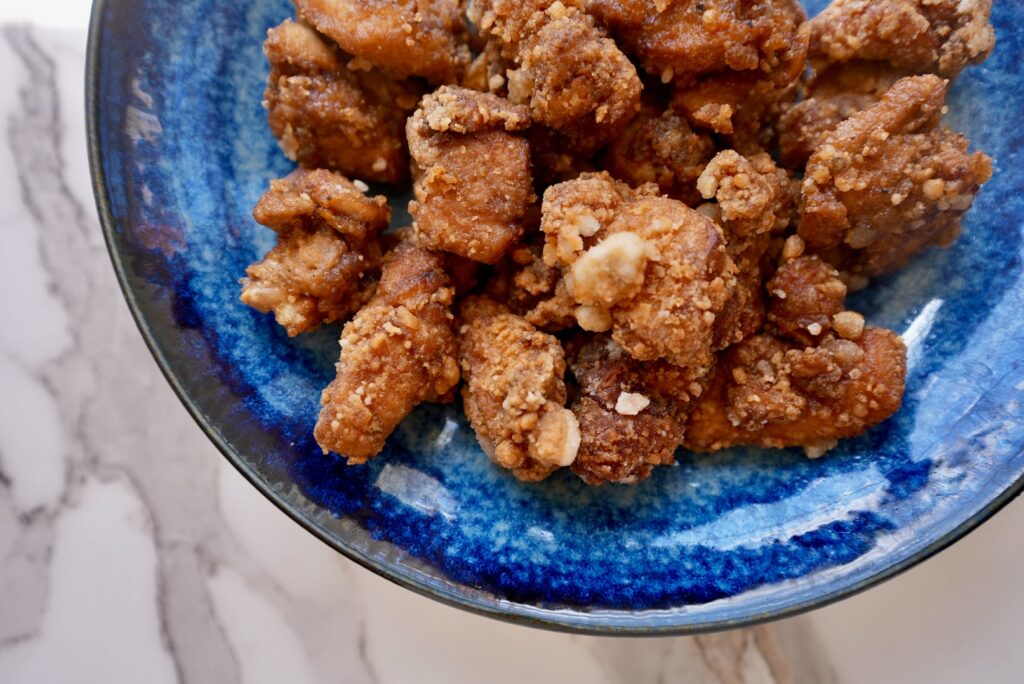
This version builds on that foundation by incorporating Japanese curry powder into the marinade, infusing the chicken with subtle spice, a hint of sweetness, and the signature umami flavor of Japanese curry. The result is crispy on the outside, juicy on the inside, and packed with bold, comforting flavor in every bite.
The curry seasoning doesn’t overpower – it enhances. It’s tossed into the marinade with garlic, ginger, and soy sauce to create a layered flavor profile that feels nostalgic. I like to serve it simply with lemon wedges and shredded cabbage to cut through the richness, or tucked into a bento box for an extra satisfying lunch.
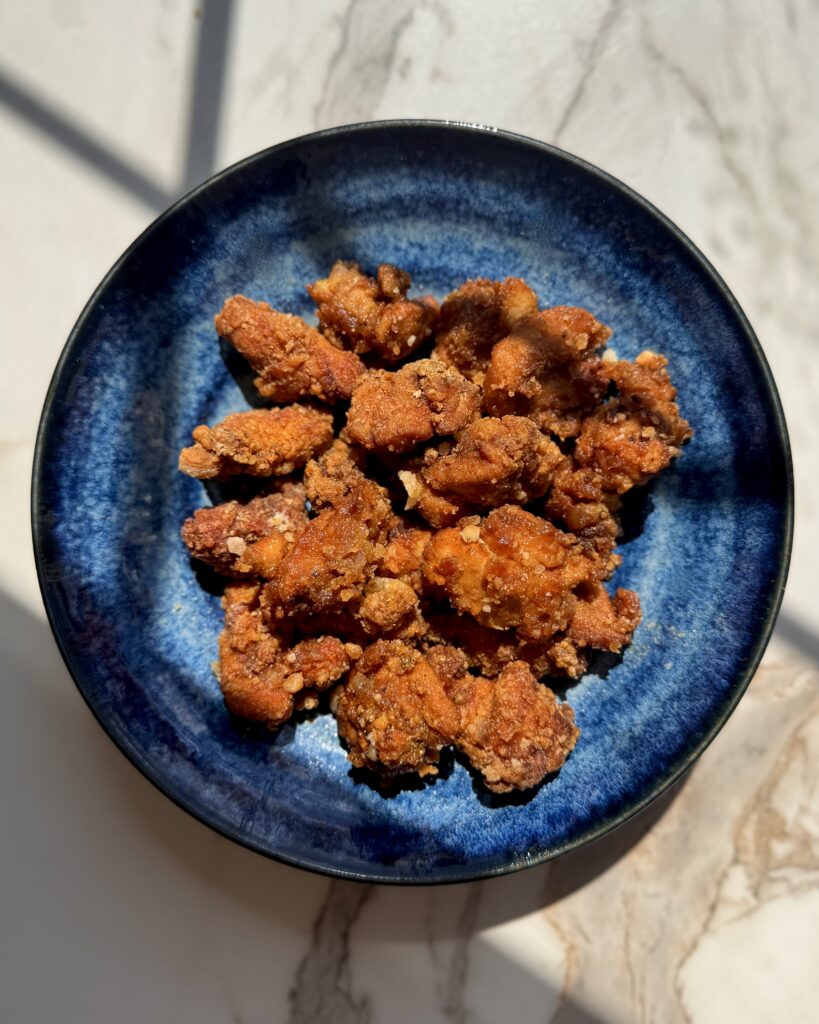
I tried curry-flavored karaage for the first time in Japan, completely by chance. Even though I grew up part of my life in Japan, I had never had this variation of karaage until I was in my 20’s. My mom regularly made us karaage at home, but this version instantly stood out! The aroma, the slight kick from the curry powder, the addictive crunch. I remember thinking about it long after that meal.
Recently, I had it again at a Japanese restaurant where I live in the U.S. and was immediately reminded of that first experience. I knew I had to recreate it at home. It took a few rounds of testing to get the balance of flavors just right, but now that I have, this recipe has become a regular in my kitchen!
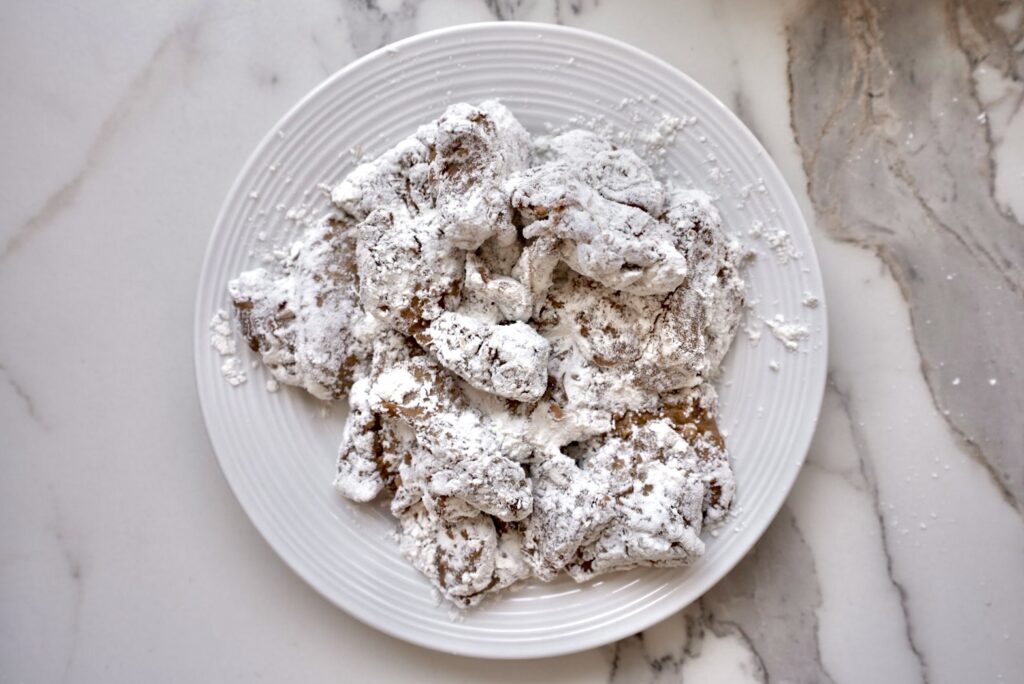
Tapioca Starch Substitutes
- Potato Starch: This is actually what is traditionally used in karaage for that signature light, ultra-crispy coating, but here are several substitutes you can use:
- Cornstarch: This is also used in the recipe, but if you want, you can opt to use only cornstarch. It gives a similarly crispy finish, though slightly lighter and less craggy than tapioca starch.
- Arrowroot Powder: Another gluten-free choice that gives a crisp but slightly lighter and smoother texture.
- All-Purpose Flour: Works in a pinch but gives a denser, more bready crust. Often used in combination with cornstarch to balance texture.
- Rice Flour: Offers a light, crisp bite and is a popular choice in many Asian fried dishes.
- Wheat Starch: Less common at home, but sometimes used in commercial kitchens – results are crisp and light.
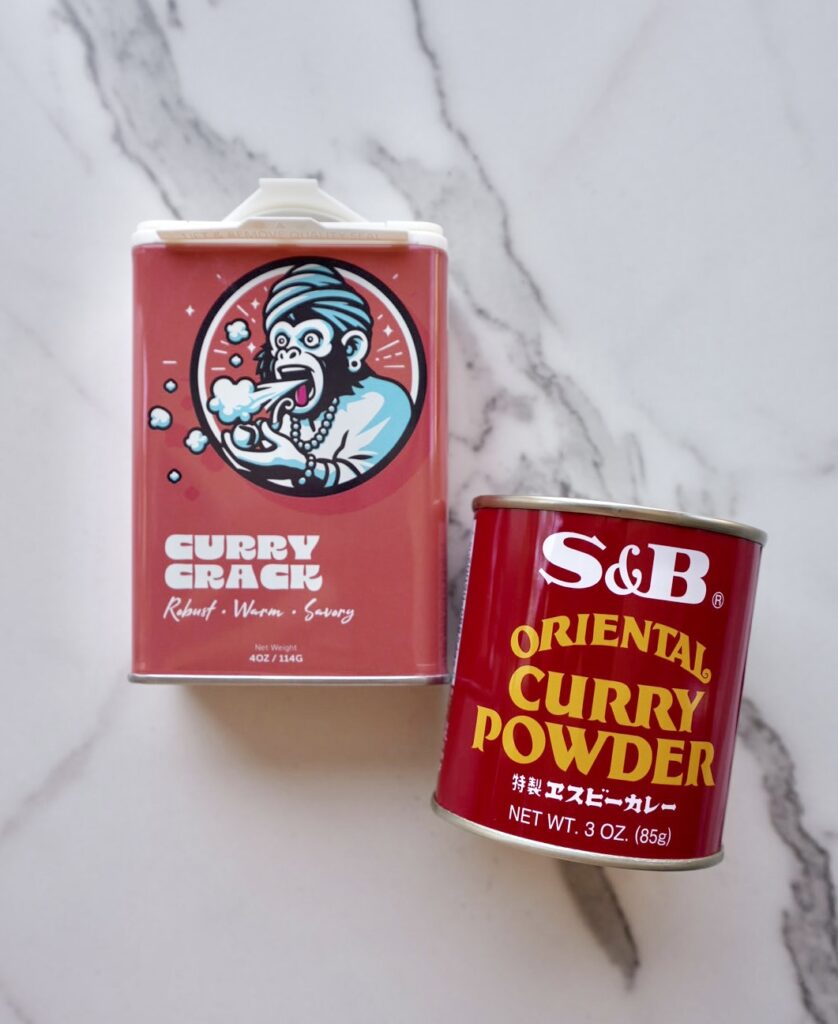
Achieving the Curry Flavor
To achieve the curry flavor in karaage, I use Japanese curry powder as part of the marinade. Unlike Indian curry powders, which tend to be spicier or more complex, Japanese curry powder is milder, slightly sweet, and packed with umami.
I mix it right into the marinade along with soy sauce, garlic, ginger, and a touch of sesame oil. As the chicken soaks up all those flavors, the curry powder adds a subtle heat and an aromatic depth. This really sets this version apart from traditional karaage.
When it comes to choosing a curry powder, I highly recommend either S&B brand or Crack Spice. Either one will give you that signature Japanese curry flavor that makes this dish so addictive.

Curry-Flavored Karaage (Japanese Fried Chicken)
- Total Time: 1 hour
Description
Curry-flavored karaage is crispy Japanese fried chicken infused with warm, aromatic curry spices for a bold, savory twist on the classic dish.
Ingredients
- 2 lb boneless chicken thighs (skinless or skin-on, as preferred)
For the Marinade:
- 1 tablespoon soy sauce
- 1 tablespoon grated ginger
- 3 cloves garlic, minced
- 1 teaspoon black pepper
- 1/2 tablespoon sesame oil
- 3 tablespoons Japanese curry powder (reserve 1/2 for tossing karaage in after frying)
- 1 teaspoon paprika
For Coating:
- 1/4 cup tapioca starch
- 1/4 cup cornstarch
For Frying & Serving:
- Vegetable oil, for deep frying
- Lemon wedges (optional)
- Kewpie mayo (optional, for dipping)
Instructions
- Cut the chicken thighs into bite-sized pieces and place them in a large bowl.
- Add soy sauce, grated ginger, garlic, black pepper, sesame oil, half of the curry spice, and paprika to the chicken. Mix well to coat all the pieces evenly.
- Cover the chicken and marinate in the fridge for at least 30 minutes (or up to a few hours for deeper flavor).
- In a separate bowl, combine the tapioca starch and cornstarch. Mix just enough to combine (but don’t over-mix. Don’t worry if the starches clump into little balls – this makes the chicken even more crunchy when fried!). Toss the marinated chicken pieces in the starch mixture until well coated.
- Heat about 2 inches of vegetable oil in a heavy-bottomed pot to 350°F (175°C). Fry the chicken in batches, being careful not to overcrowd the pot. Fry for 5 – 7 minutes, turning occasionally, until the chicken is golden brown and cooked through. Transfer to a wire rack or paper towels to drain.
- While still hot, lightly toss the fried chicken with the reserved Japanese curry spice for an extra burst of flavor. Serve hot with lemon wedges and Kewpie mayo on the side, if desired.
- Prep Time: 45 minutes
- Cook Time: 15 minutes
Nutrition
- Serving Size: 4




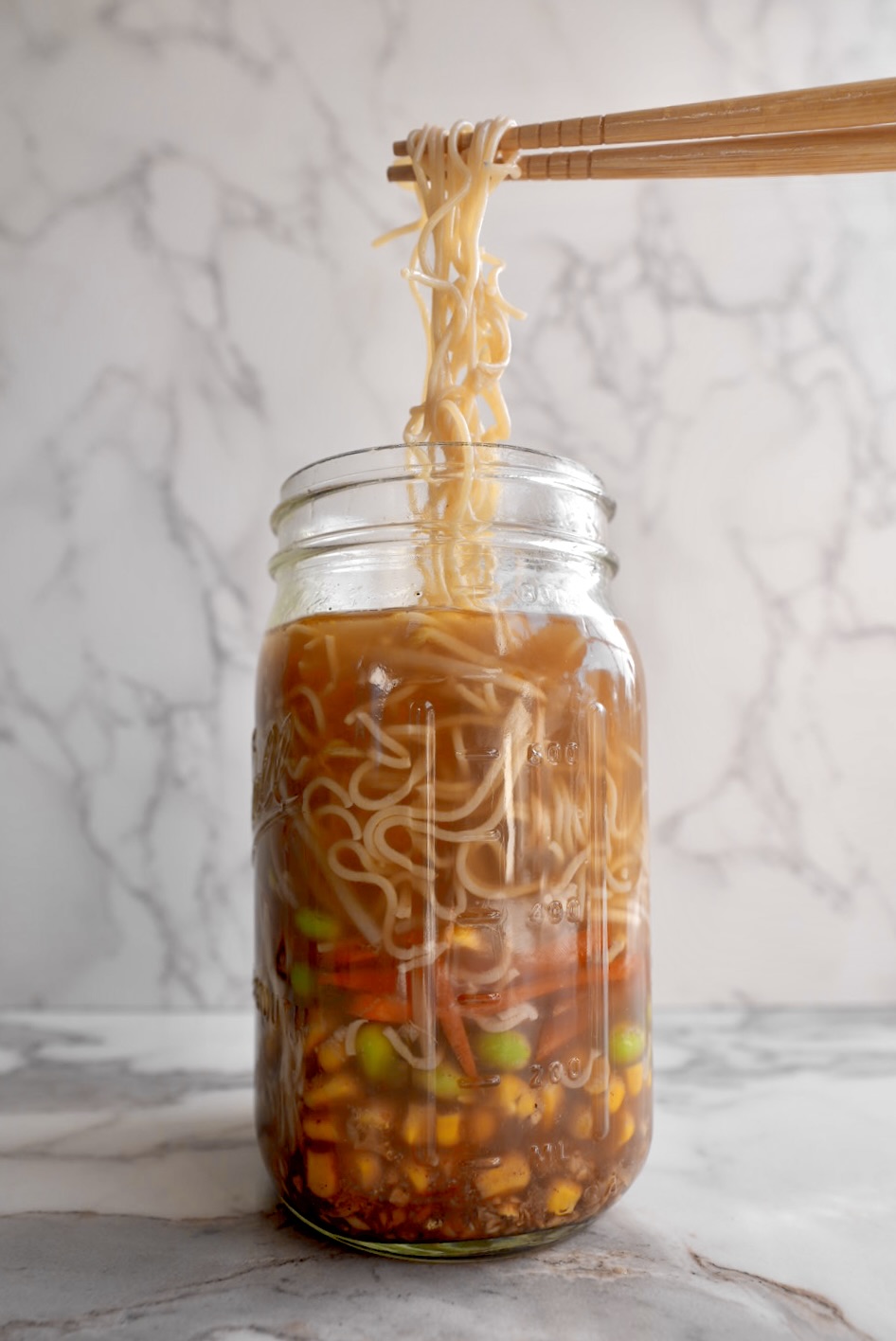
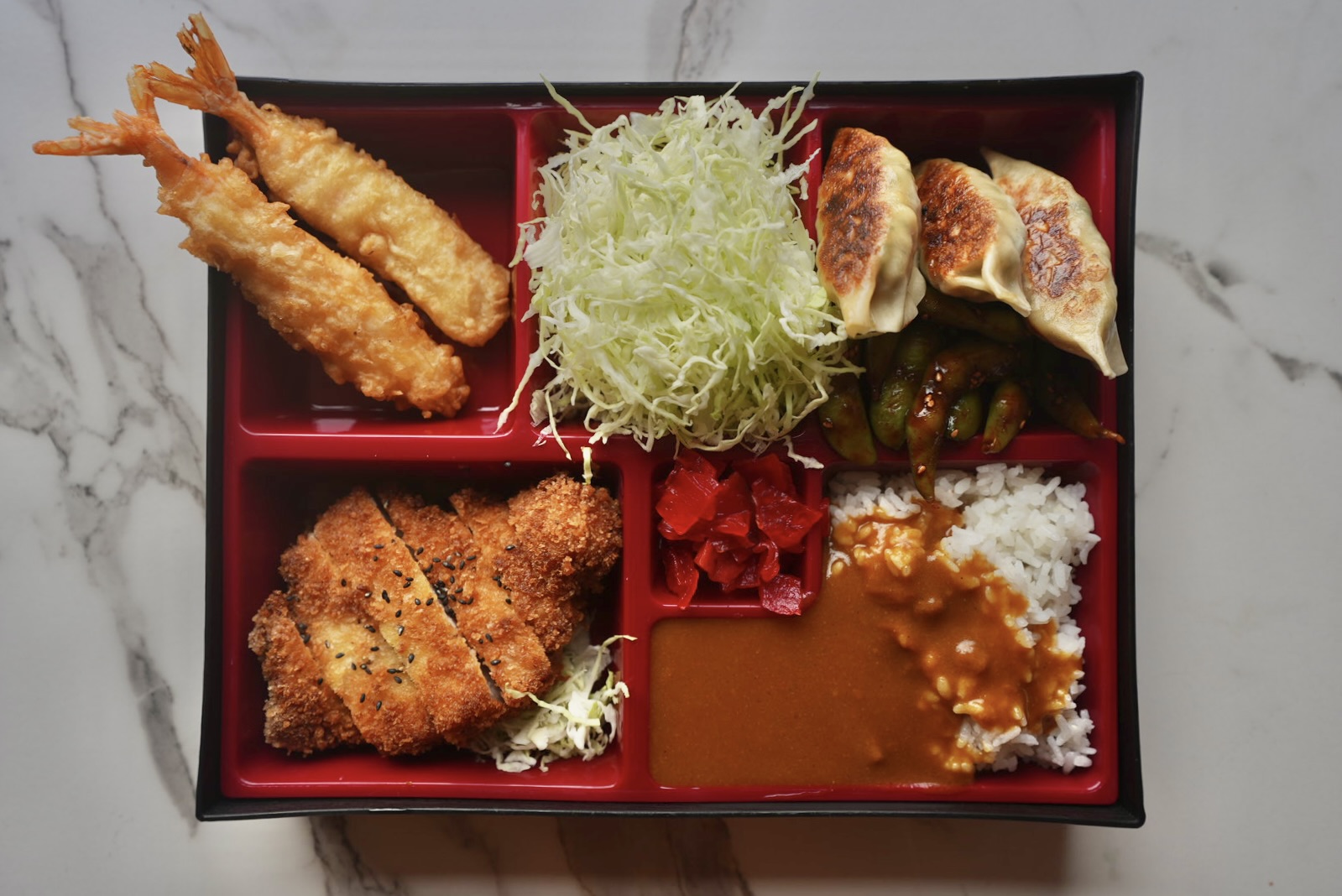
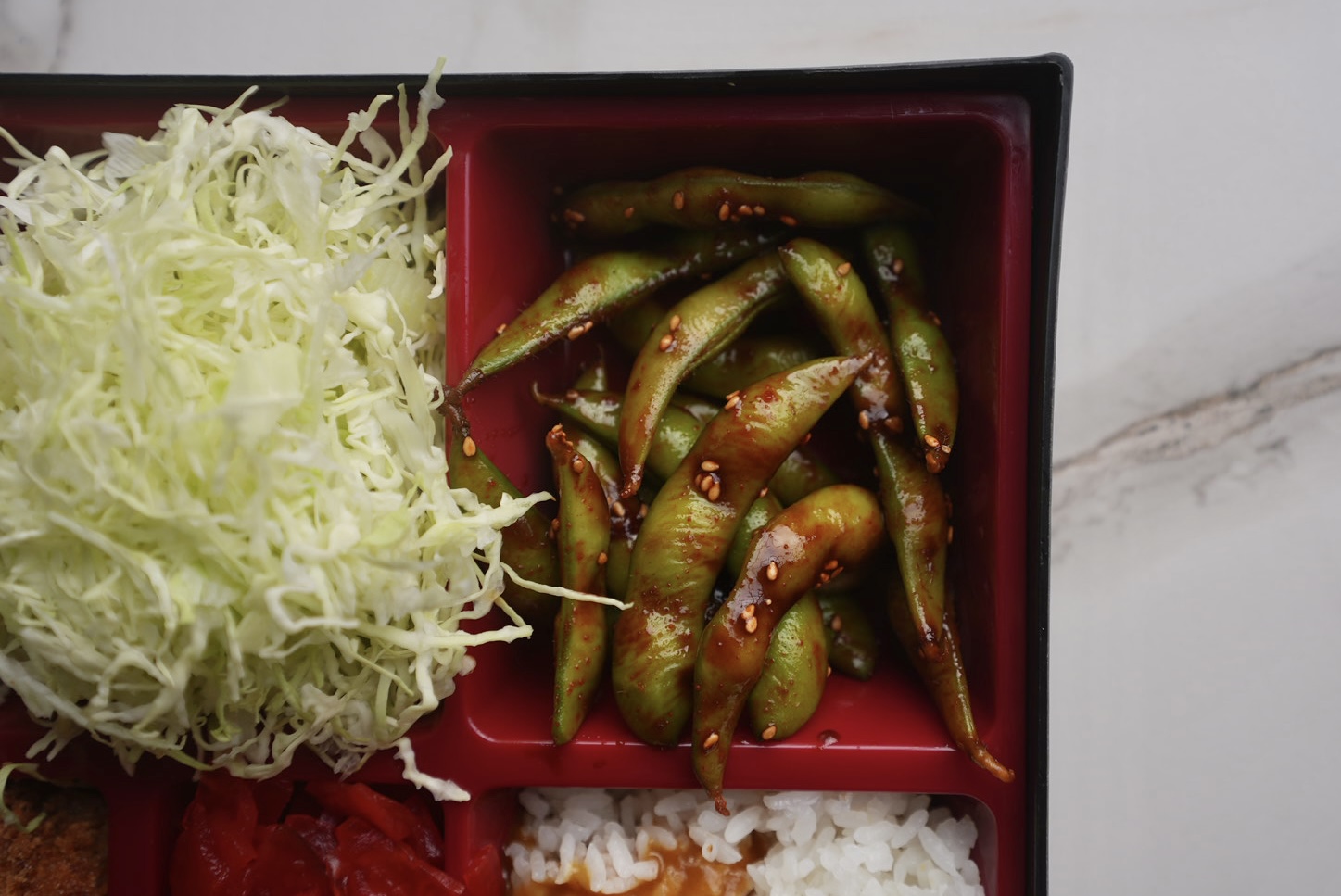
I’ve never had curry karage in Japan (alas) but I had it at a local Japanese restaurant near me. Was so excited when I saw your recipe. It was delicious – I will definitely be making again. 🙂
Hi Selena – thanks for your review! That’s great to hear 🙂
My family loved this recipe! Definitely a keeper